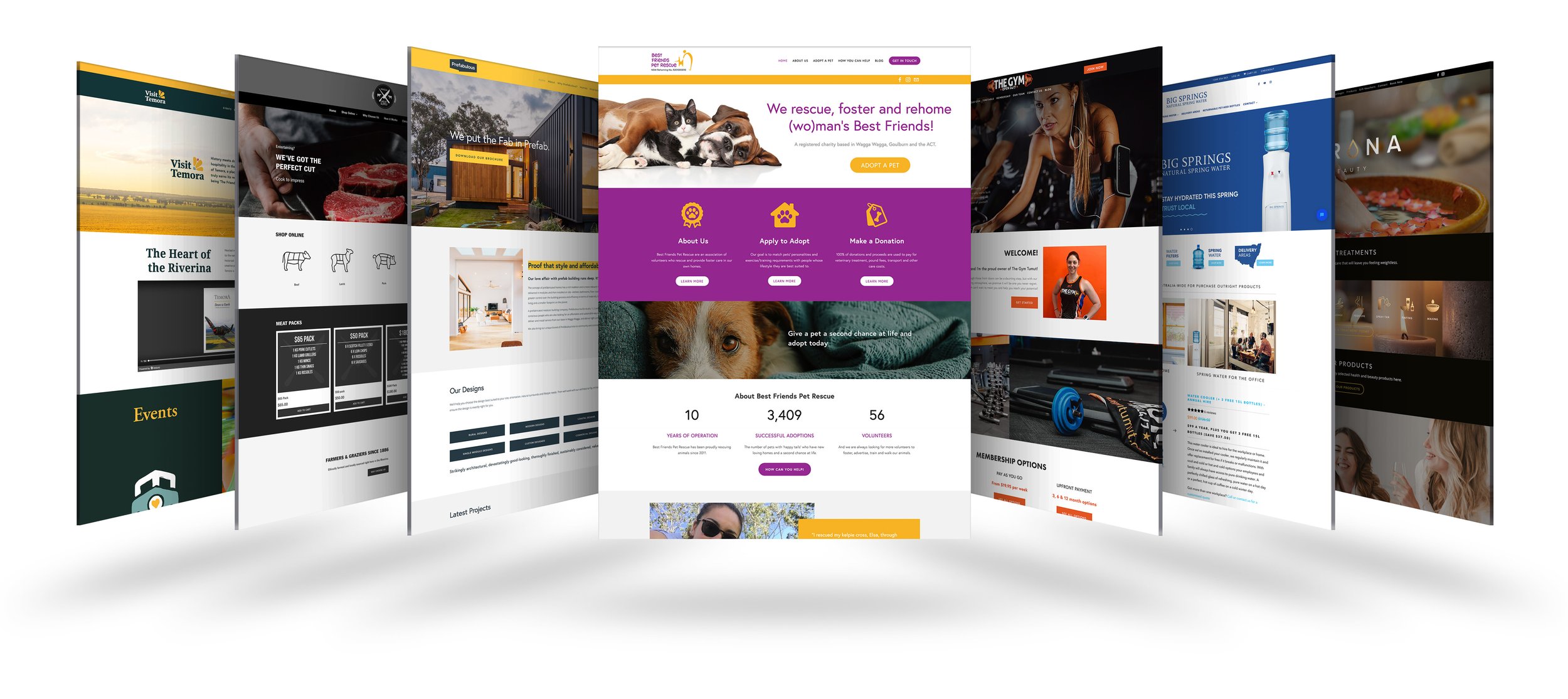Multi-Device Website Design for Seamless Viewing on Any Device
Multi-Device Website Design for Seamless Viewing on Any Device
Blog Article
Top Tips for Creating an Impactful Web Site Style That Transforms
To accomplish this, one must consider a selection of aspects, consisting of understanding the target audience, focusing on individual experience, and optimizing for mobile platforms. The strategic usage of compelling call-to-actions and a well-defined aesthetic pecking order plays an essential role in directing individuals through their trip.

Understand Your Target Audience
Understanding your target market is basic to reliable web site design, as it prepares for developing an appealing user experience. Recognizing who your users are, including their demographics, preferences, and actions, enables developers to customize the internet site's material, format, and functionality to meet details requirements.
Performing comprehensive marketing research is critical in this process. Studies, meetings, and analytics can give useful understandings into customer expectations and discomfort factors. By compiling this data, developers can create individual personalities that stand for different sections of the audience, ensuring that style choices are informed and appropriate.
Moreover, comprehending the target market helps in choosing suitable layout elements such as color design, typography, and imagery that resonate with individuals. An internet site that talks directly to its target market cultivates a sense of connection and depend on, encouraging longer check outs and greater conversion rates.
Inevitably, a user-centered approach to site style not just enhances user fulfillment yet additionally supports organization objectives by driving engagement and loyalty. By focusing on the needs and preferences of the target audience, a site can efficiently offer its objective and attain wanted results.
Prioritize Customer Experience
To enhance the overall effectiveness of a website, prioritizing user experience (UX) is necessary (Website Design). A properly designed UX makes sure that site visitors can navigate the site effortlessly, discover info rapidly, and engage with content meaningfully. This brings about boosted individual contentment and higher conversion prices
Begin by carrying out intuitive navigation. Menus should be rationally structured, allowing customers to find essential areas of the site with very little effort. Uniformity in layout elements, such as color design and font styles, promotes experience, which is vital for preserving user involvement.
Additionally, take into consideration the packing speed of your site. A delay of simply a few seconds can bring about significant drop-offs, as customers are less most likely to wait for a slow-loading web page. Enhancing images and maximizing code can improve efficiency and retain site visitors.
By focusing on customer experience, you not only create a much more satisfying environment for site visitors yet also strengthen your brand's reputation. Ultimately, a focus on UX is an investment in the long-term success of your web site.
Maximize for Mobile Instruments
Maximizing for mobile phones is important in today's electronic landscape, where a raising variety of customers gain access to sites with mobile phones and tablet computers. A mobile-friendly layout not just boosts customer experience but likewise plays a considerable function in enhancing search engine rankings. To achieve this, it is vital to adopt a responsive style that immediately gets used to various screen sizes and alignments.

Loading rate is one more critical variable; mobile individuals are usually less individual and anticipate fast accessibility to info. Maximize pictures and leverage internet browser caching to enhance efficiency. Lastly, examination your website on numerous devices and display resolutions to identify and remedy any prospective usability issues. By focusing on mobile optimization, you ensure that your web site continues to be competitive and successfully engages a broader audience.
Usage Compelling Call-to-Actions
An internet site's efficiency typically rests on its capability to guide site visitors towards desired actions, making compelling call-to-actions (CTAs) essential parts of design. CTAs function as the essential points that route customers to involve with the site, whether that implies buying, authorizing up for an e-newsletter, or downloading a source.
To develop effective CTAs, quality is vital. Usage succinct language that plainly interacts the activity you desire the individual to take.
In addition, think about making use of directional hints, such as arrows or images, to lead individuals towards these buttons. By focusing on these components, services can considerably boost user interaction, driving conversions and ultimately attaining their site's objectives.
Focus on Visual Hierarchy
Efficient website style counts heavily on a well-structured visual power structure that Check This Out guides individuals via material perfectly. By arranging components in a manner that prioritizes details, designers can enhance individual experience and facilitate decision-making. This includes making use of size, shade, comparison, and spacing strategically to attract focus to the most essential parts of a web page.
Using bigger typefaces for headings and subheadings establishes a clear difference in between different sections, permitting users to check content effortlessly. Furthermore, using different colors for buttons and calls-to-action can catch individual interest and urge interaction. Whitespace is one more necessary component; it prevents mess and makes it possible for users to concentrate on crucial messages without interruptions.
Pictures and graphics need to enhance the message while additionally adhering to the well established power structure, reinforcing the overall message (Website Design). Uniformity in style aspects, such as shade plans and typography, more enhances the visual pecking order, making navigation instinctive

Conclusion
In conclusion, effective website style requires a detailed understanding of the target audience, prioritization of individual experience, and mobile optimization. The tactical use of engaging call-to-actions and a distinct visual hierarchy further boosts individual interaction. By executing these concepts, internet sites can attain greater conversion prices, making sure that design components not only attract visitors yet likewise facilitate smooth navigating and interaction. Ultimately, a well-executed internet site style functions as a crucial element in driving user activities and accomplishing service goals.
Report this page